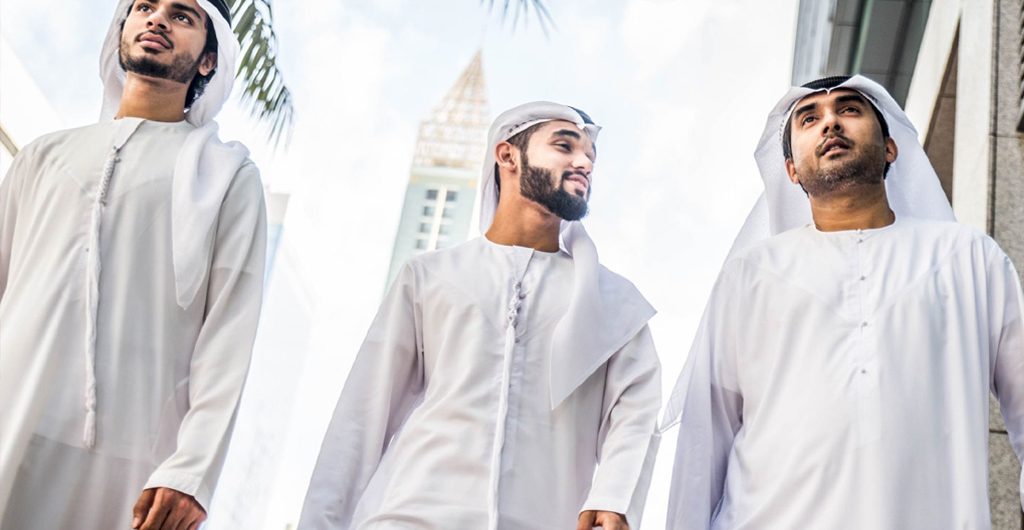Traditional dress is a symbol of culture and honor for the Emiratis. It has deep roots in their culture and religion. Emiratis rarely wear Western clothes in the UAE as they take immense pride in their traditions.
Although the Arabian Peninsula has similar clothes, there are several minor differences. Some are obvious, while others can be seen only by a trained eye.
Emirati clothing emphasizes modesty. Let’s examine the different clothing items men and women wear in the United Arab Emirates.
Click here to read about the traditional food of the UAE.
UAE Traditional dress for men
Emirati men’s traditional dress is a Dishdasha or a Kandura, a single-piece ankle-length garment. They sometimes wear half-sleeved Kanduras in their homes, but formal Kanduras are always full-sleeved.
Kandura Traditional Dress
Emirati Kanduras are mostly white, though there are other variations, such as brown, beige, grey, etc. In Saudi Arabia, the Kandura is also called a Thawb. Their style varies from country to country.
You can distinguish Emirati Kanduras from others because they are collarless and have discreet embroidery on the sleeves. Another distinguishing factor is the long twisted piece of cloth with a tassel at the end. This ornament, made of the same material as the Kandura and dangling out of the Kandura’s neck, is called Al Farukhah.
The Gutras and Shemaghs
Emirati men wear a Gutra as a headdress. It is an integral part of their traditional Emirati clothing. The Gutra, a square piece of scarf, protects their head and face from the scorching heat of the desert. They also cover their faces with it when the dust is too high. Agal is used to hold the Gutra on the head.
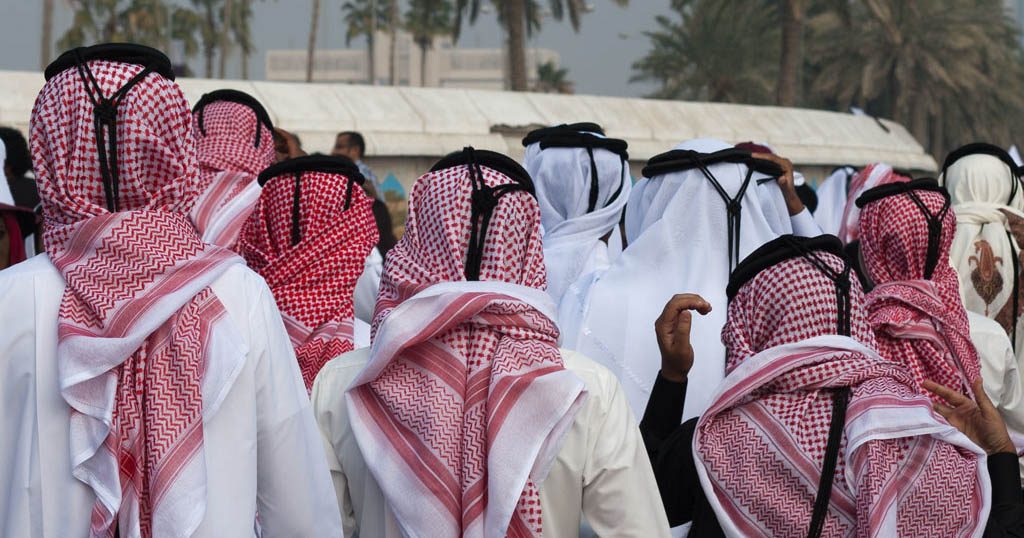
There is another variation to Gutra called Shemagh. While Gutras are made of white cotton with a smooth finish, Shemaghs have red checks on the white. Originally from the central part of the Arabian peninsula, it has also spread to neighboring regions.
Headdresses worn in countries like the UAE, Saudi Arabia, Kuwait, etc., are similar. However, Oman and Yemen have completely different head covering types, resembling Indian Turbans.
There are so many ways to style the Gutra. Men wear Gutras depending on the person’s occasion, age, and social status.
Young men mostly wear the Shemagh more than the Gutra. They also tie the Shemaghs around the head instead of wearing an Agal. This style is called Hamdaniyya. The Kufi cap, or Taqiyah, worn under the Gutra and Shemagh, is also a part of the UAE traditional dress.
Click here to read about the things to do in Dubai.
Agal
Depending on the dialect, an Agal (Iqal/Eqal) is a black rope-like band placed over the head to hold the Gutra in place. When worn, it is one enormous circular band folded to form two rings. Agals are not worn in casual settings but cannot be missed on formal occasions.
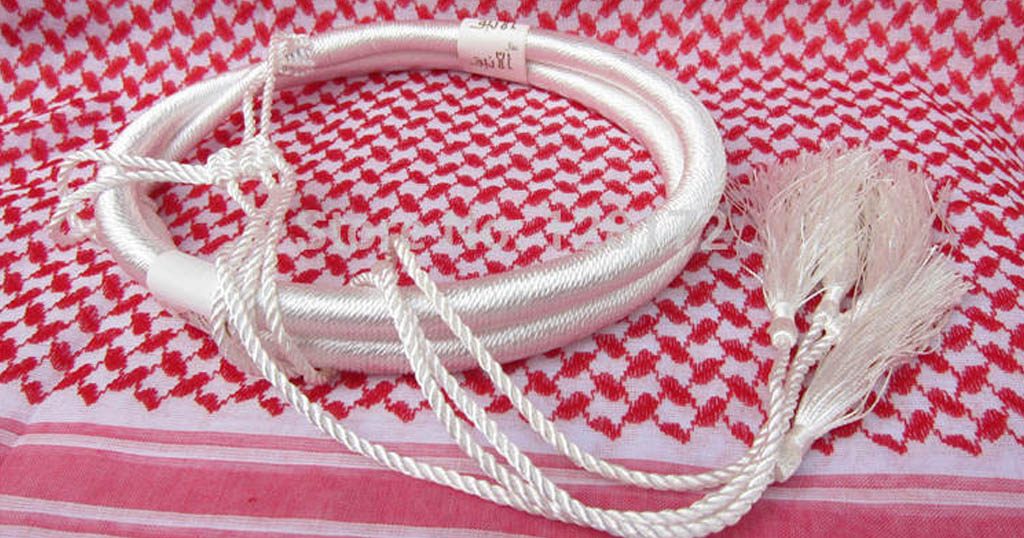
Besides the functional part of holding the Gutra in place, they are also an aesthetic element. Emirati agals have two cords (Tarbousha) hanging at the back or have two ropes that become one with a few tassels at the end. The number of cords differs between countries. Saudi agals usually do not have these cords, and Qatari agals have four. Perfuming the agals is also part of the custom.
Sometimes, you may come across white agals worn by religious scholars. There are also multicolored decorative Agals with more than two rings. These Agals resemble a crown worn over the head, although these aren’t in fashion nowadays.
Agals were also used to tie the legs of camels to pin them to the ground. The most expensive agals are made of Iraqi wool, and the more affordable ones are made of synthetic yarn.
Bisht
Also dubbed ‘wing of the Arab,’ Bisht is the common factor that connects all Arab cultures. They have used it for thousands of years. Unlike all other pieces of traditional Emirati clothing, the Bisht is relatively similar across all Arab countries. It is a ceremonial sleeveless cloak worn over the Kandura that is either black or beige and trimmed with golden or silver embroideries. The African Burnous is a cultural adaptation of the Bisht.
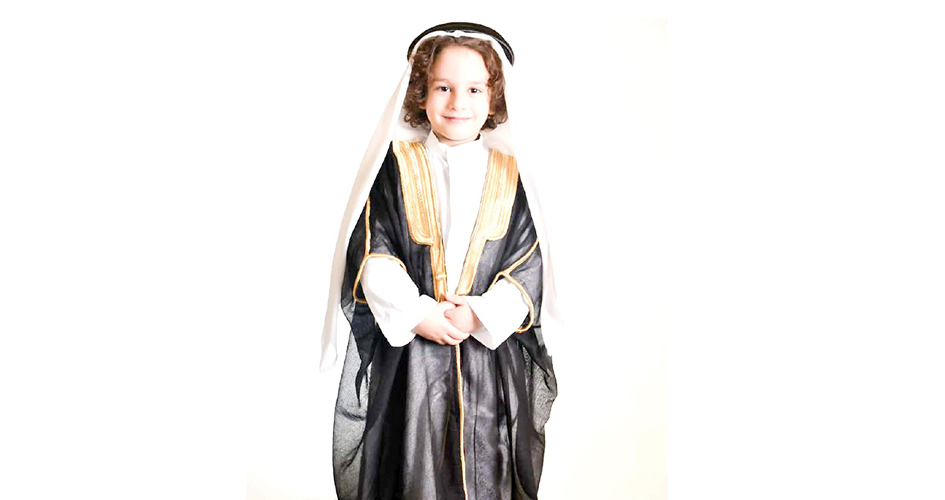
Bishts are decorated with gold, silver, or copper. For that reason, the prize of the Bisht depends on the amount of gold or silver used in it. The intricate Embroidering requires the hands of a skilled artisan. Bisht, therefore, is a luxurious garment that can be very expensive, costing as much as 15,000 Dhs.
Because this is worn on top of the Kandura, some people mistakenly think that this is winter wear. Though the Bedouins used Bisht in winter to combat the cold in the past, nowadays, it is used for special occasions.
Hand-made soft woolen Bishts are the most prized among all. Those made of camel wool are also prestigious. When you go to shopping malls and see one displayed on the shopfront, it’s probably made of cotton or polyester. Thick ones are made from cotton or wool, while the light, see-through ones are made of linen.
Persian traders brought the Bisht to the Arab world. The word ‘Bisht,’ with Persian roots, means ‘something worn on the back. Even though the Bisht has two sleeves, it is usually worn with only one arm.
In the past, everyone wore the Bisht regardless of the occasion or position. Nowadays, Bisht is worn by Emirati men at ceremonies, graduations, and Eid or by royalty. And Emirati grooms wear Bisht for the wedding. You may see imams in the UAE mosques donning a Bisht during prayer congregations and Friday sermons.
Others
A white vest called Faneela is worn beneath the Kandura. Woozar, another piece of undergarment, is tied around the waist. Traditional footwear for Emirati men is called Na-aal, a sandal worn without socks.
UAE traditional dress for ladies
Abaya
While the traditional outfit of Emirati men is primarily white and sometimes shades of light colors, the women wear black.
The traditional outfit of Emirati women is the Abaya, an elegant, loose, fitting, flowing black cloak. The Abaya is always worn over other clothes. Underneath the cloak, women wear traditional or Western clothes. The dark cover also helps hide the bright-colored garments.
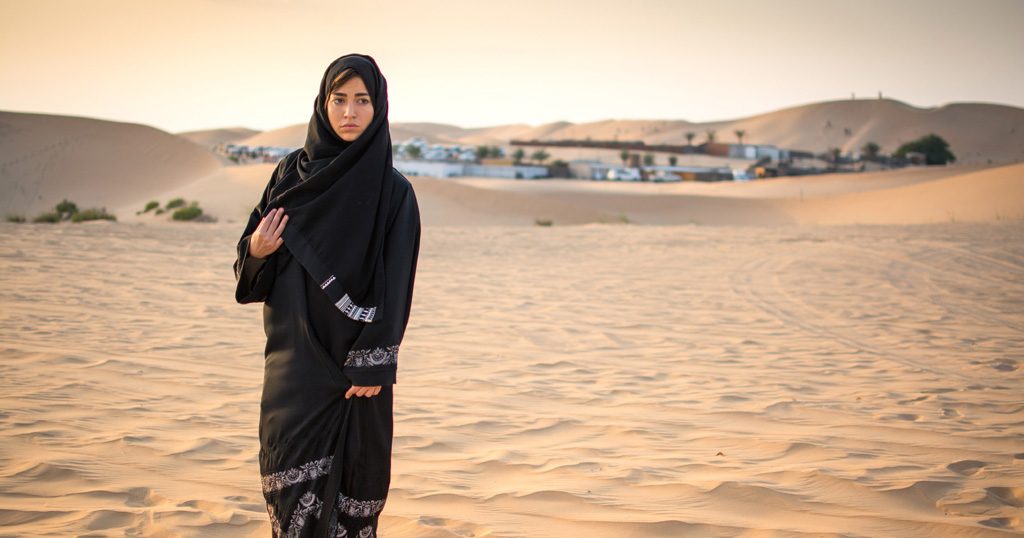
Abaya is not a garment exclusive to Emirati women. Most of the Islamic world, including North Africa and Asia, has adopted this as a part of their Islamic custom. Abaya covers every body aspect, from the neck to the bottom, except for the feet and palms.
Traditional Abayas are plain black. Modern Abayas festooned with simple embroidery designs are in vogue nowadays, apart from plain grey and brown shades. Although cotton and linen are used to suit the hot desert climate, the most popular material for Abayas is crepe. You can quickly see an Abaya designed by famous fashion brands like Chanel or Dior in shopping malls.
Kaftan or Jalabiyya
When Arab women are within the household or among female relatives, they wear a Kaftan, a Jalabiya. Kaftans are highly decorated with embroideries and come in a plethora of colors.
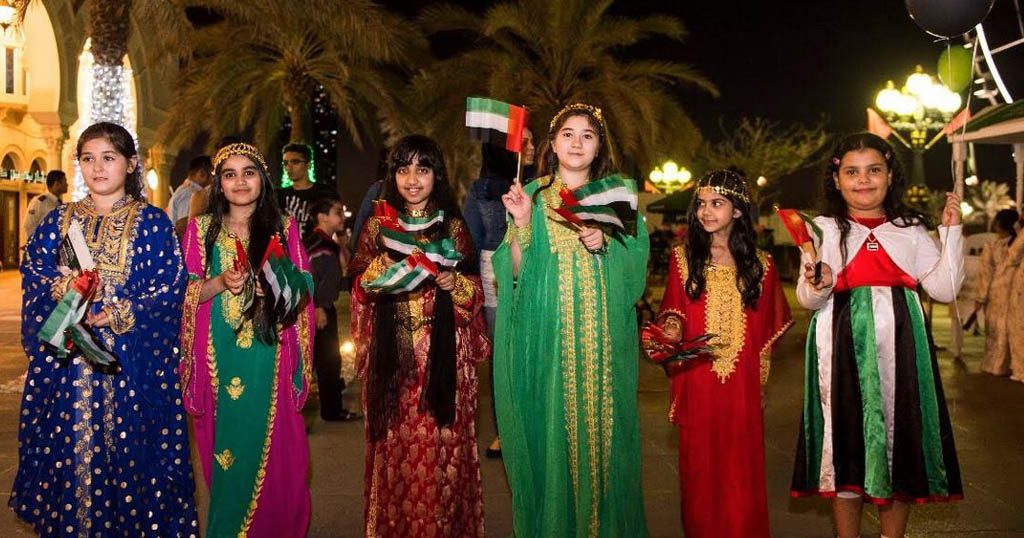
A Kaftan is, in fact, a female version of the Kandura. Instead of the men’s white Kandura, women wear those with more feminine designs and colors. Loose pants called Sirwal are worn along with Kaftan.
Hijab
Hijab is the umbrella term covering different headdresses worn by Muslim women. According to Islamic teachings, the Hijab covers the neck and hair. There are numerous hijab styles, which we will discuss soon. The headdress is made of very light material that allows for aeration. Both headdresses and face veils come under the Hijab.
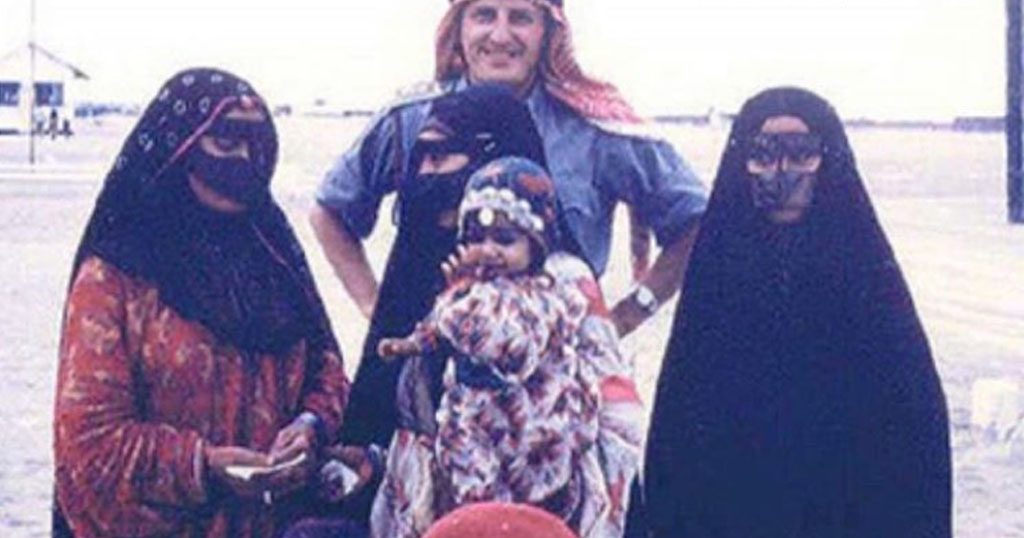
Shyla
Shyla is a black scarf loosely draped around the head, covering the hair.
Gishwah
Some women also cover their faces with light, see-through fabric draped over their faces.
Burqa
Burqas are face veils covering most of the face except the eyes. Emirati Burqas are different from those in South Asian countries. They have a distinctive look and are worn like masks.
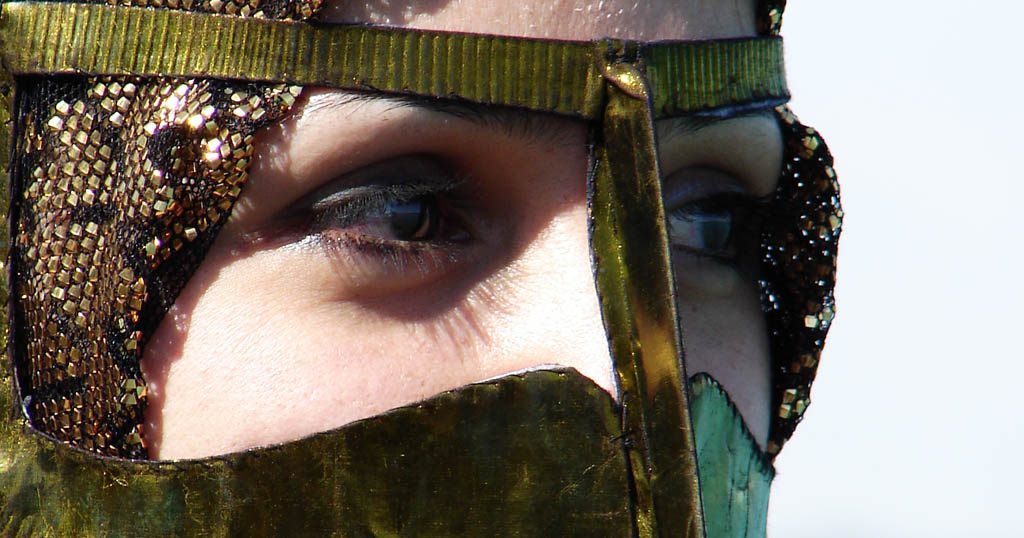
Unlike the main headscarf, the Burqa is traditionally made of a particular type of cloth. At first sight, it looks like metal, but it is actually a unique, lightweight, and sweat-absorbing fabric. Burqas are available in red, yellow, and green, with red being the most expensive and green being the cheapest.
A small piece of wood keeps the Burqa in shape and bridges over the nose without touching the face. The Burqa is tied to the back of the head with white cotton strings. In the olden times, every woman made their burqas by hand.
Girls wear burqas once they pass puberty. The original idea was to provide modesty for women. Some women wear Burqas for special occasions as part of the culture. The younger generation of Emirati women only wears the traditional Burqa for wedding ceremonies.
Explore more Emirati traditions
There are a few ways to explore the old traditions of the Arabs in Dubai. Desert safaris in Dubai are one of the activities where you can find UAE traditions. The safari takes you to the desert, and the camp resembles a Bedouin house. The campsite lets you live like the Bedouin Arabs for a while. You can dress in traditional Emirati clothes, smoke Shisha, ride the camel, and many more.

